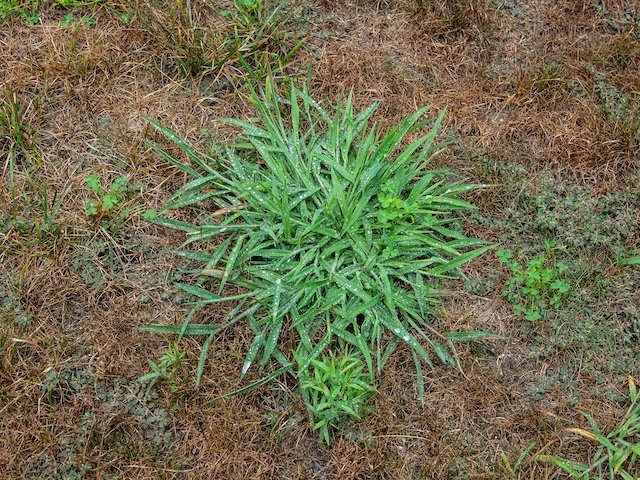When is the best time to apply crabgrass preventer?
Crabgrass can be a difficult weed to deal with in your yard. There is a tiresome cycle that can be created when trying to remove it. Each individual crabgrass plant can produce and release up to 150,000 seeds throughout a season! If you pull crabgrass out of the ground, there's a high chance that at least a few of those seeds have fallen into the soil already and are sitting dormant waiting to germinate for the next season. To prevent this from happening you want to start your prevention methods before the crabgrass plants have a chance to produce and release those seeds. Granular crabgrass preventer is a pre-emergent, meaning you need to stop the germination before it occurs. If this window is missed, Drive XLR8 (Quinclorac) will need to be applied as a granular is not longer effective.
Early spring is the prime time for applying crabgrass preventer on your lawn. Typically, April 15th through May 1st is about the correct calendar dates; however, it is weather dependent. Here in Wisconsin, the application window can start in March if the ground temperature rises quickly. Ideally, the preventer needs to be on ground before the soil temperature reaches 55⁰ F. Once it reaches 55⁰ F for 36 to 72 hours (including at night), crabgrass will begin the germination process.
How does a crabgrass preventer work? When applying a granular product, it will dissolve, forming a thin barrier near the surface of the soil. This barrier intercepts the germinating crabgrass seeds, killing them off. When the germinating seed comes in contact with the product, it stops growing. Never apply grass seed and crabgrass preventer together.
Ideally, before applying, get your lawn into a healthy mowing schedule of once every week to two weeks at a 2 to 3 inch level. If your lawn is experiencing split stems, the herbicide may damage your lawn. Making sure you have sharp lawn mower blades and that your lawn is otherwise disease free is a good way to prevent and mix those minor issues. Wait at least 48 hours to mow again after putting down the herbicide to allow it time to reach the plant.
If you have a newly seeded yard, wait to use the crabgrass preventer or another pre-emergent herbicide until you have mowed your lawn at least 4 to 6 times. Crabgrass preventer does not discriminate. It also prevents new grass seed from germinating. With a newly seeded yard you run the risk of preventing or killing the grass seedlings.
If you are noticing bare spots and need to re-seed within 6-8 weeks after applying your crabgrass preventer, follow these steps. Rake the areas, turning over the soil and adding more topsoil if needed. One will need to break the barrier the crabgrass preventer formed. Remember, the pre-emergent is critical to help control crabgrass, but it will also kill any seed that is applied. Without preparing the soil with the steps listed above, chances for success are little.
If you hire out your fertilization services, be sure to notify your applicator if you put down new grass seed. He/she will need to stay away from those area(s) or skip this application. If you have any questions about the tips we’ve offered, contact us. We’re here to help.

